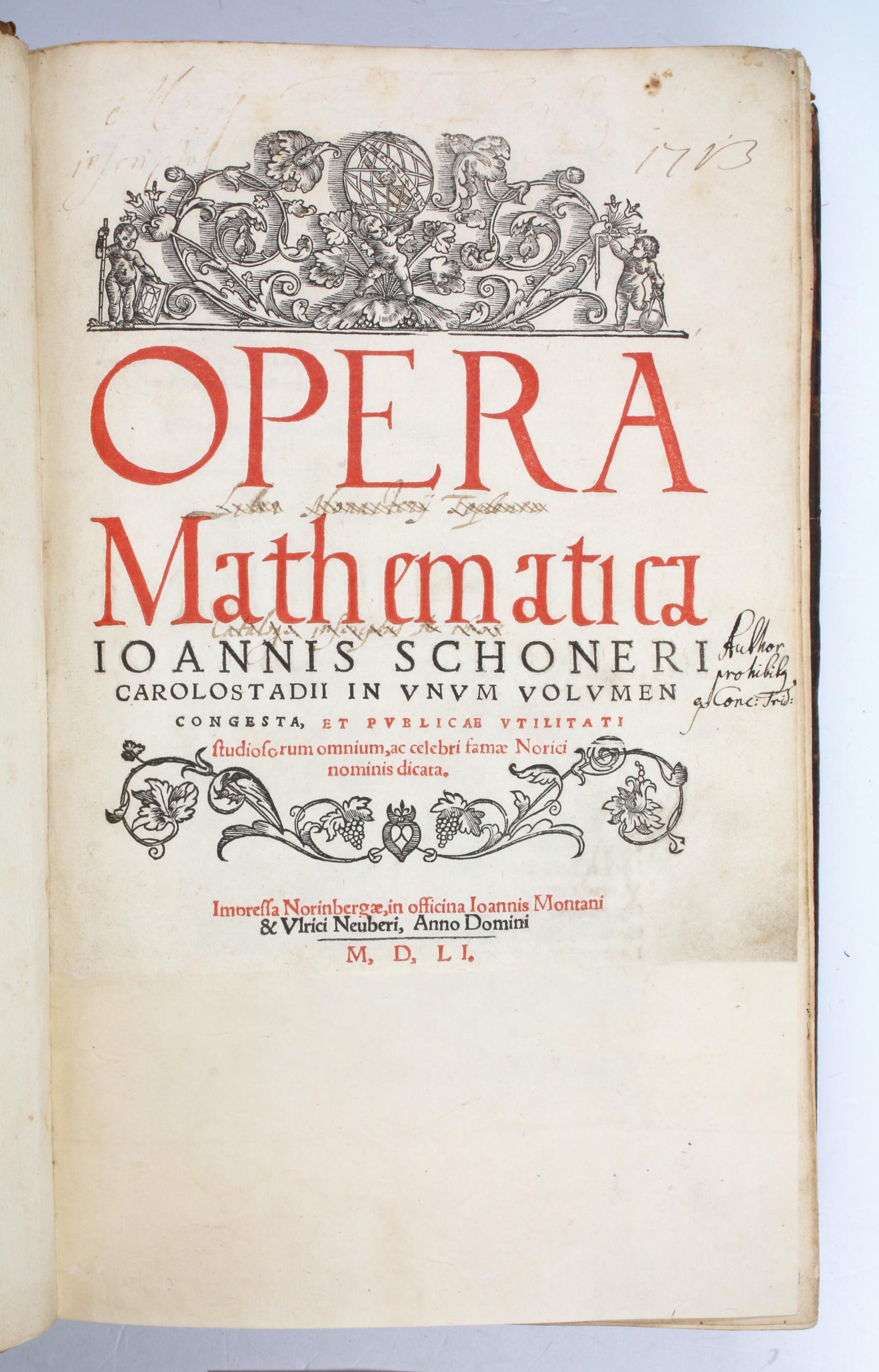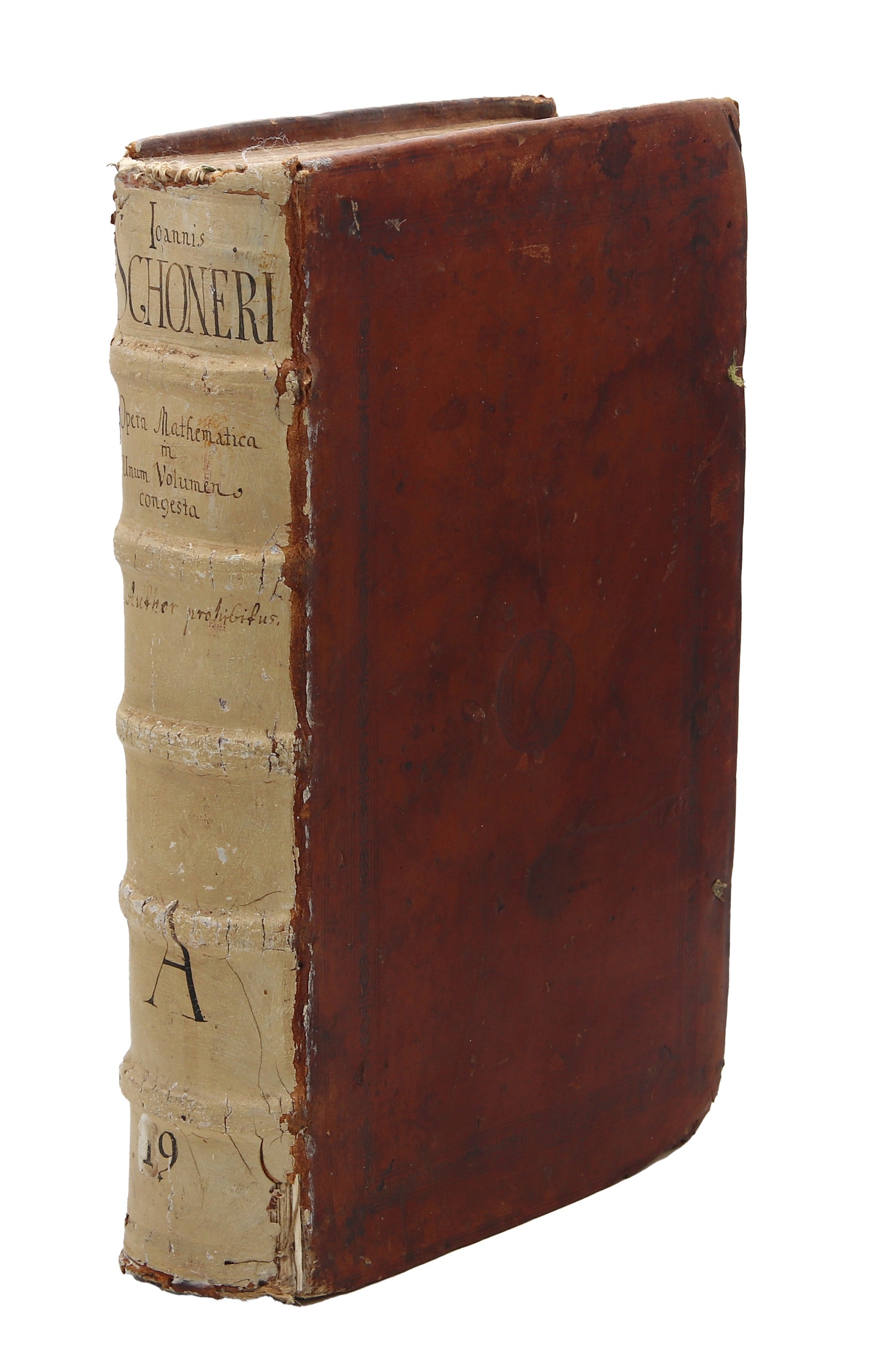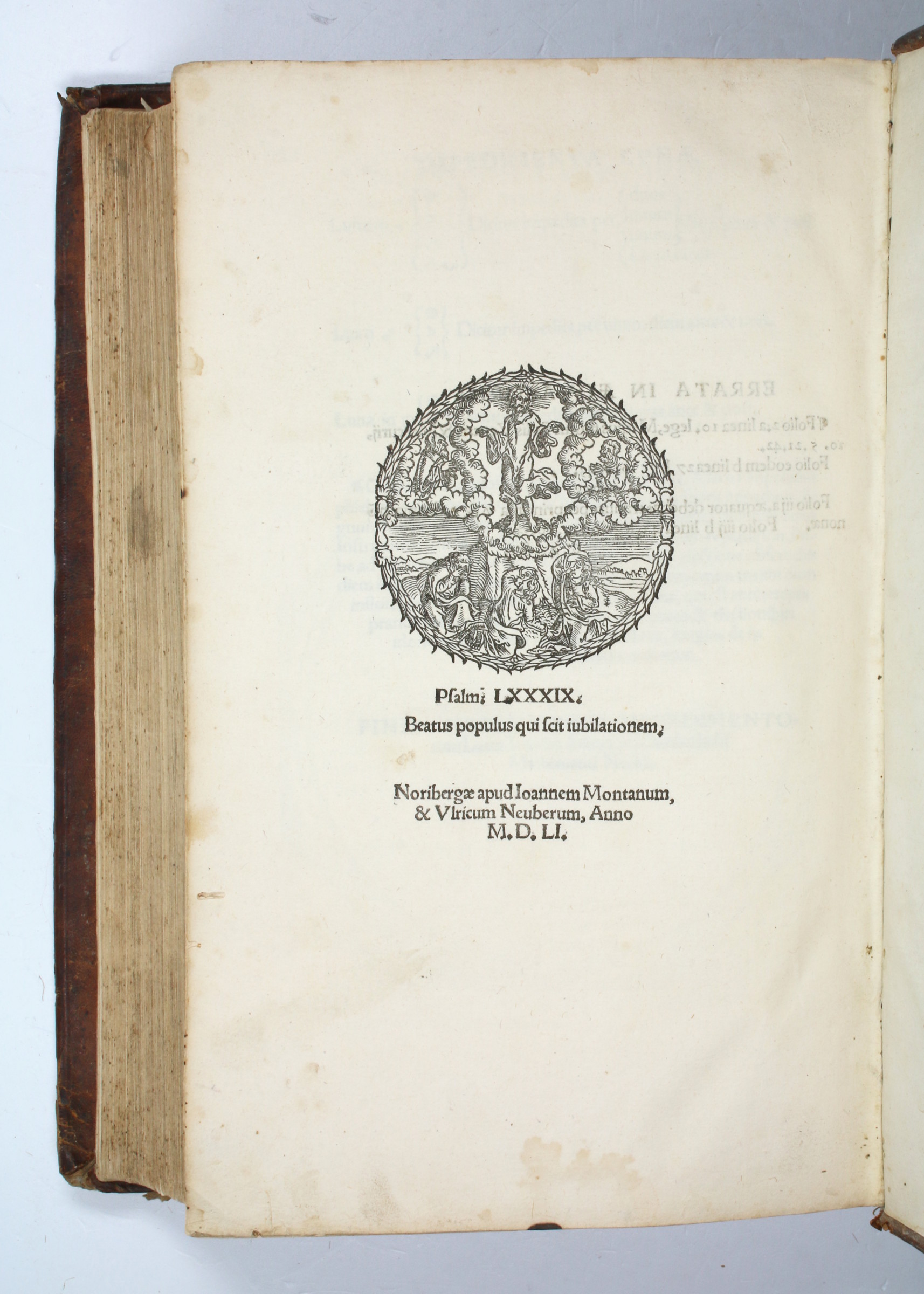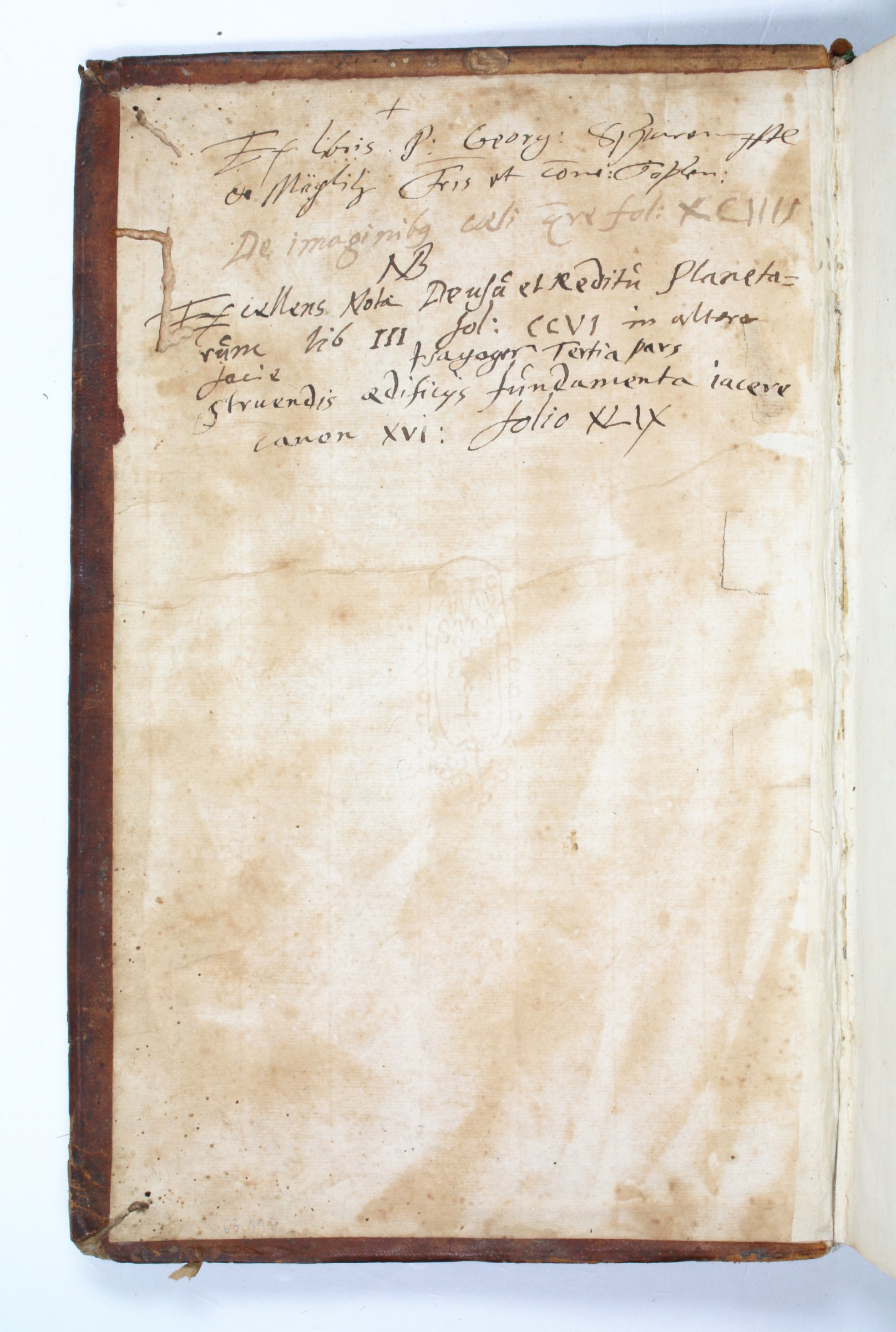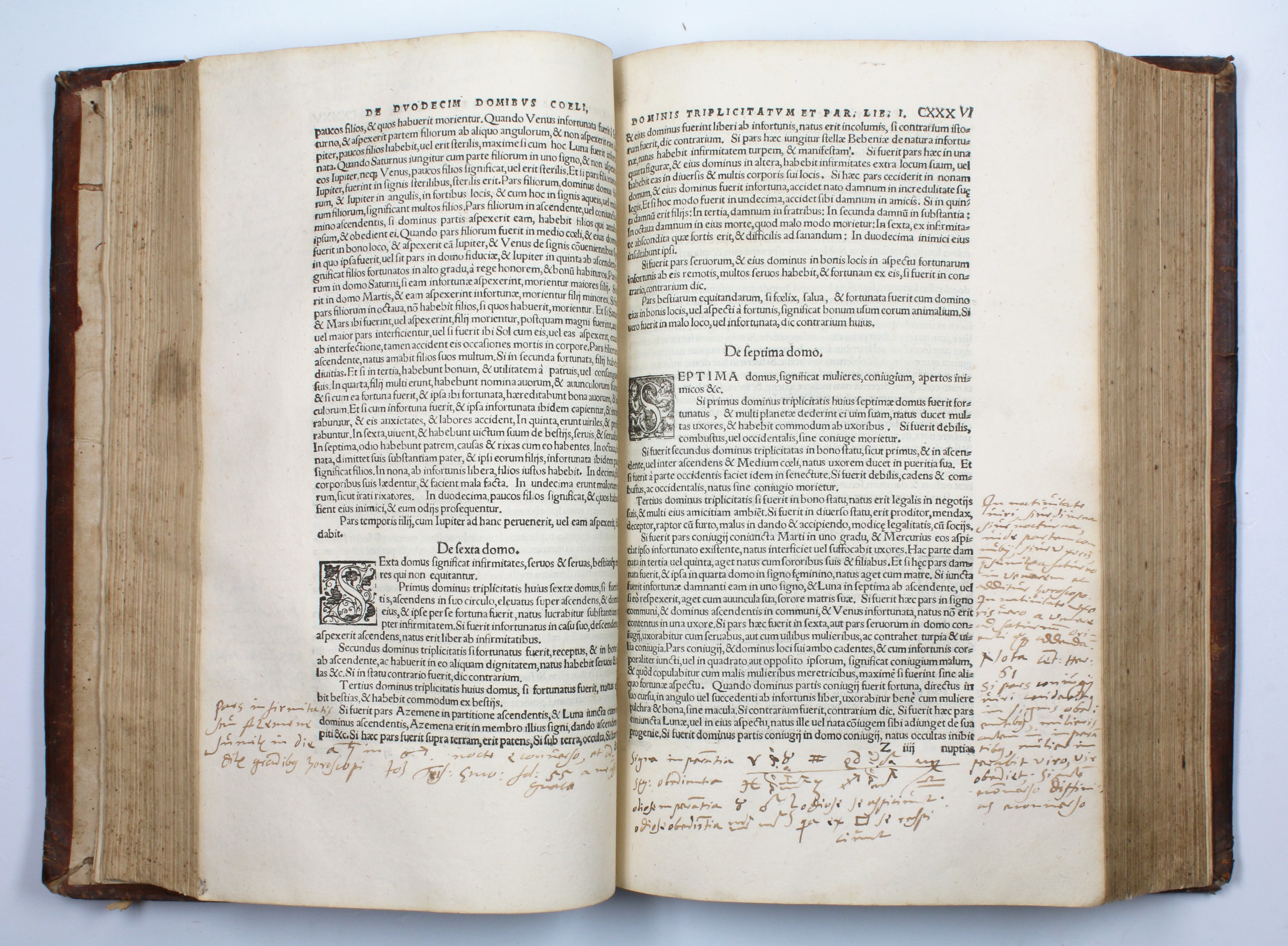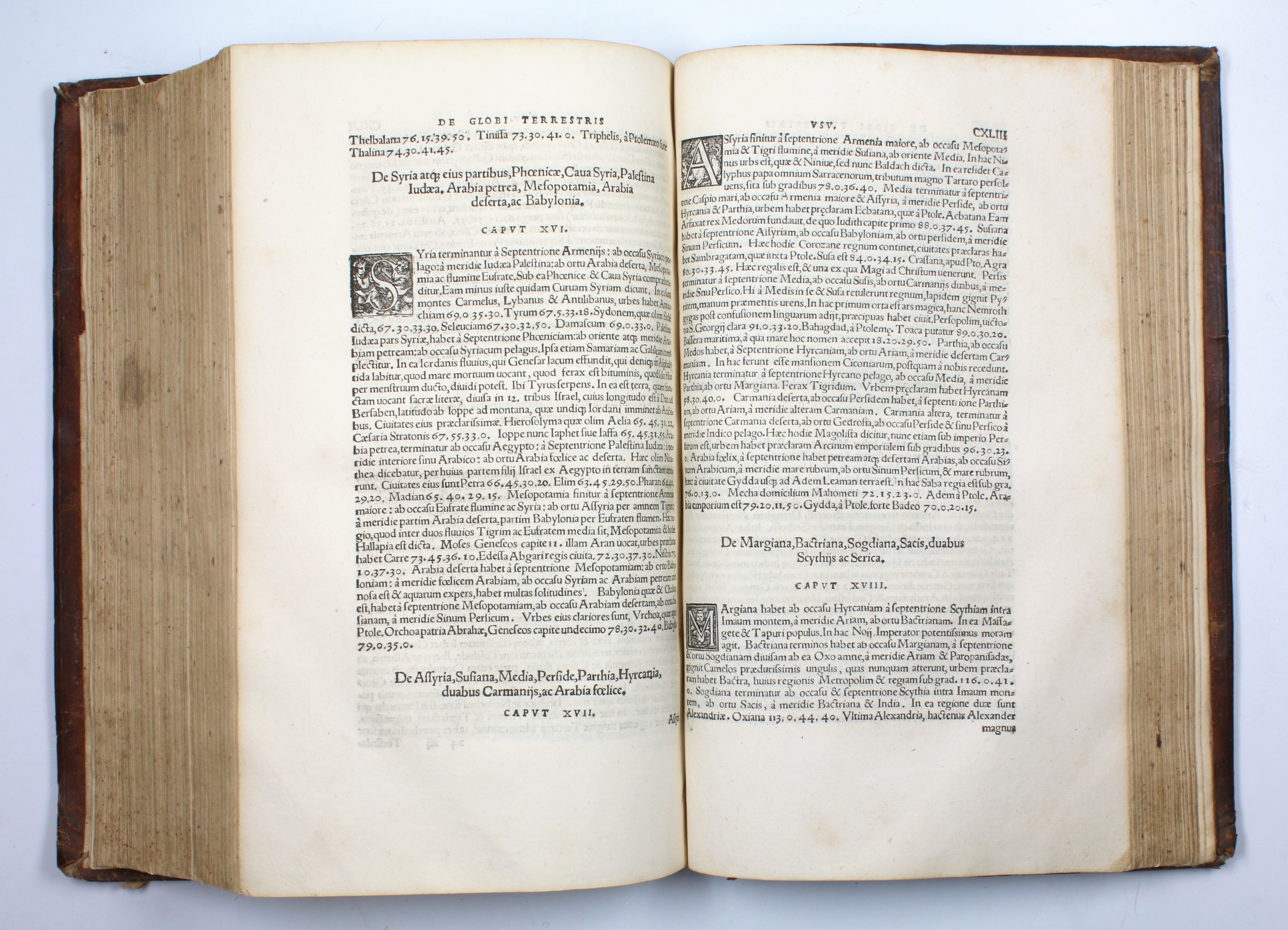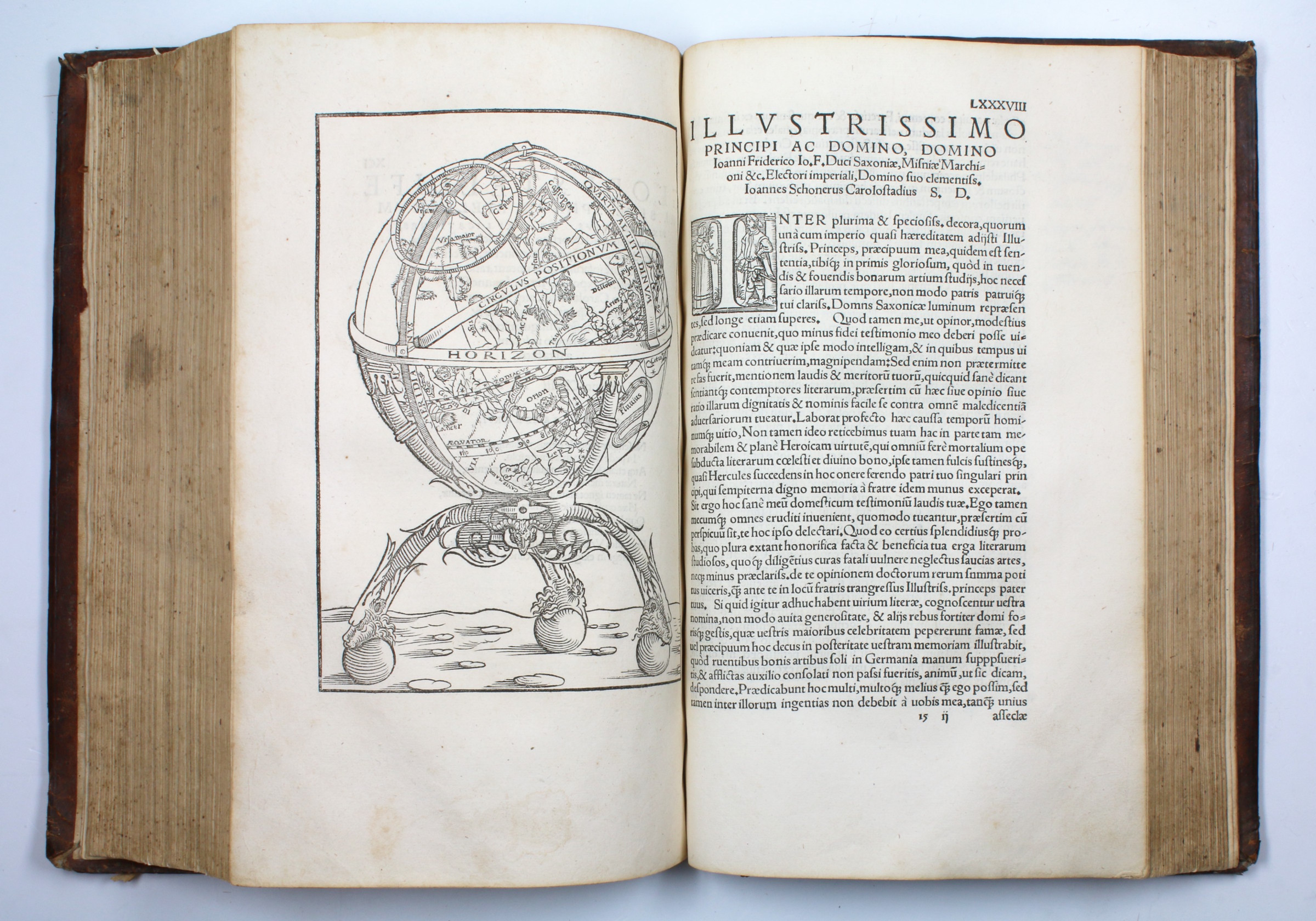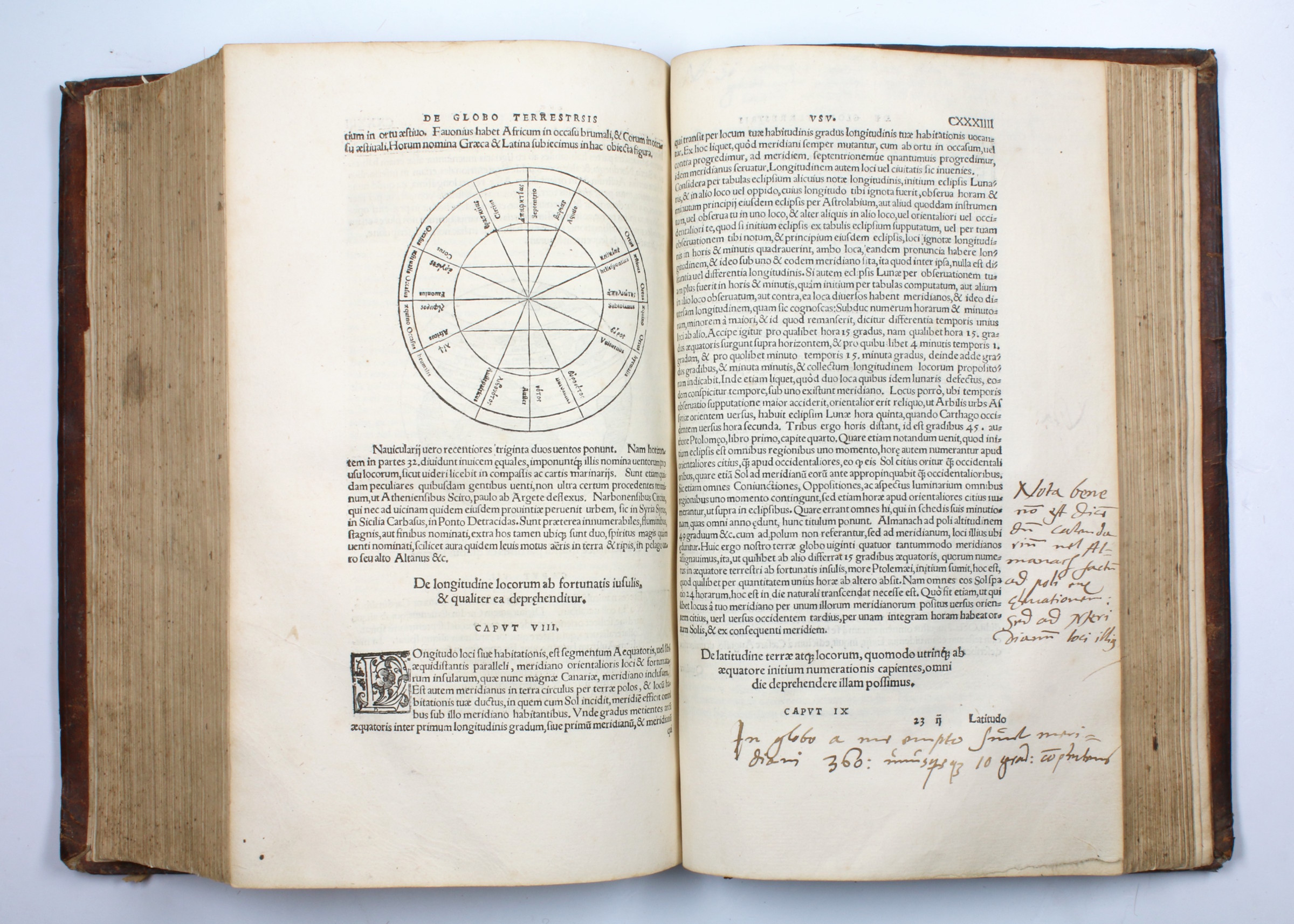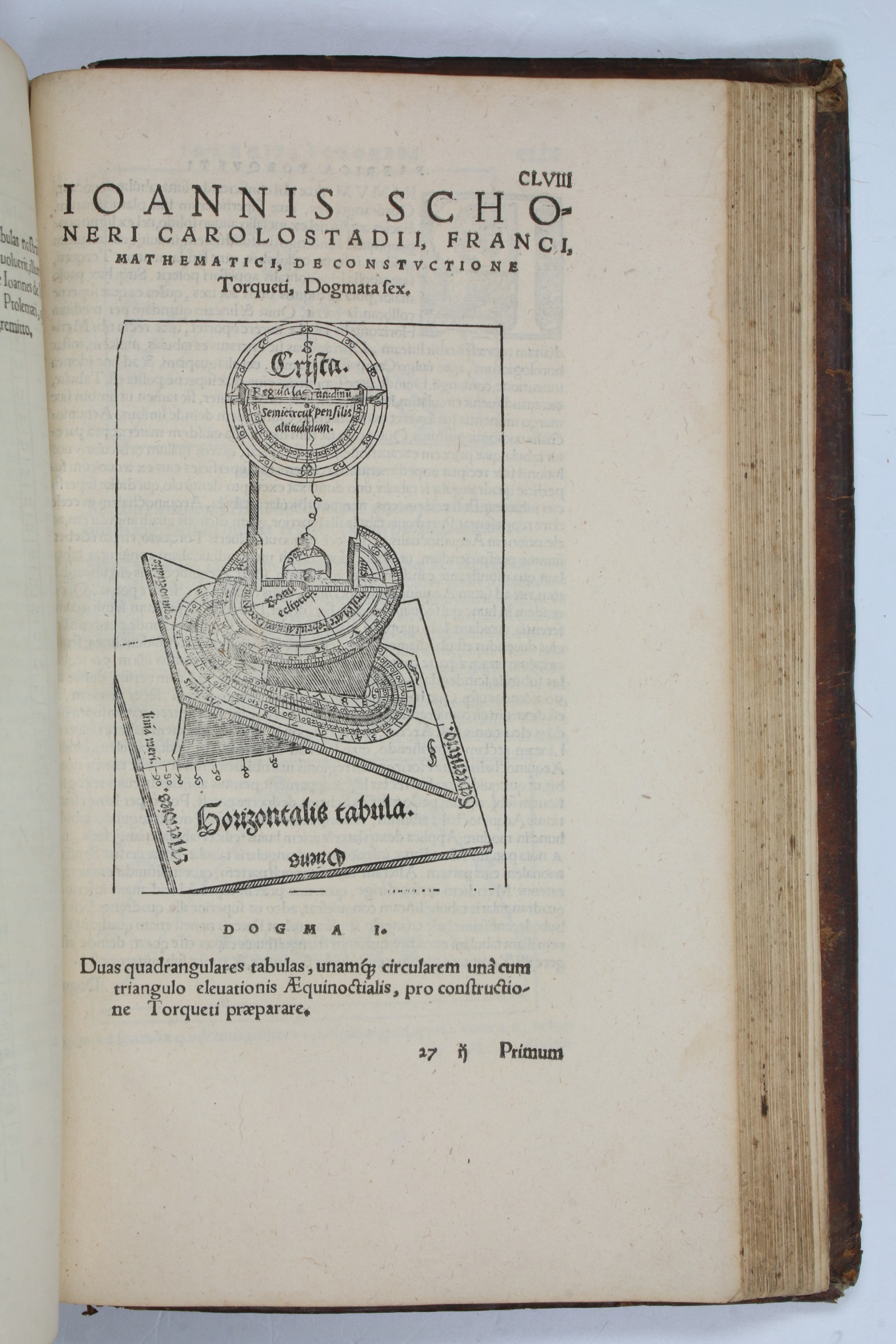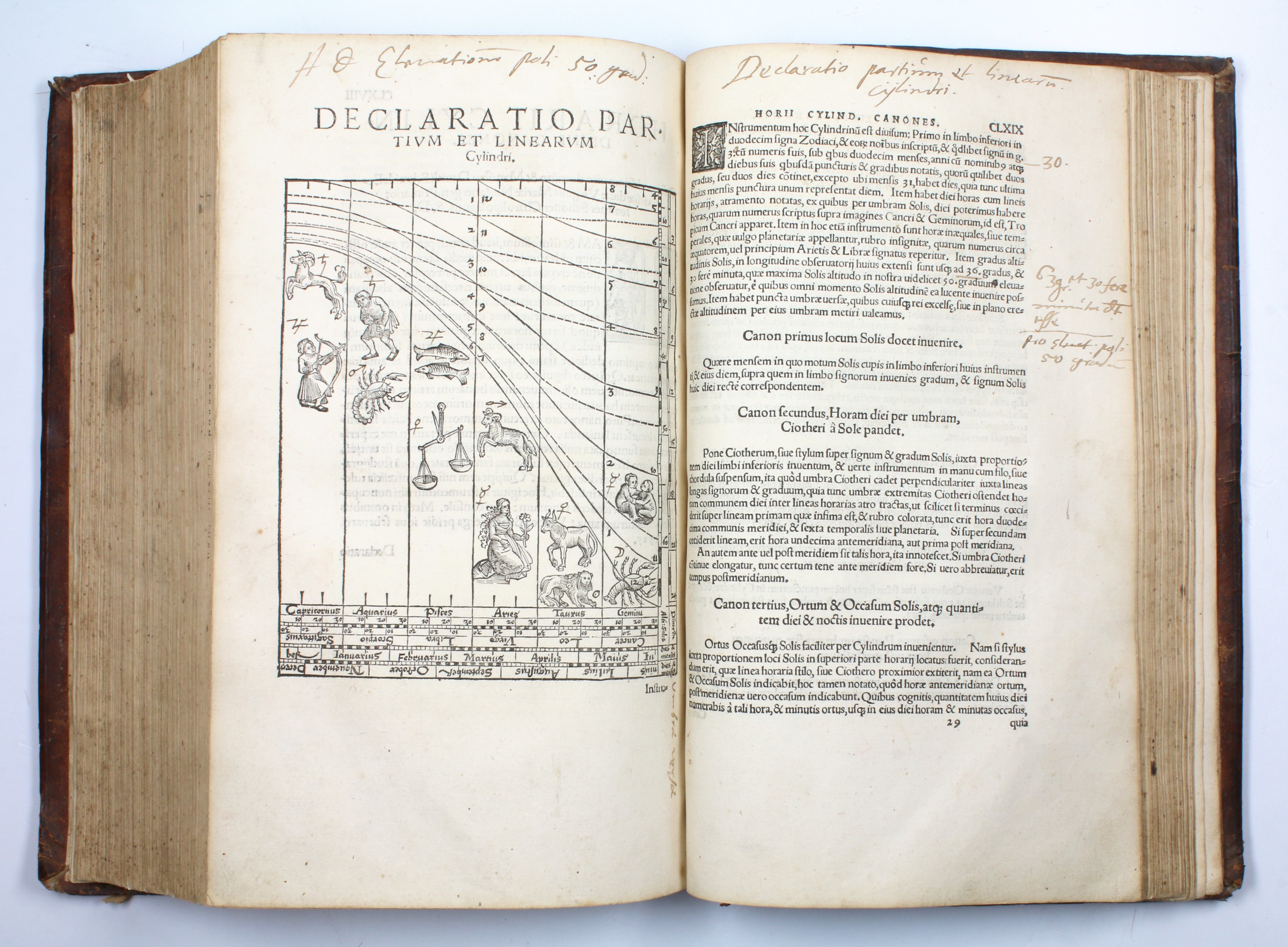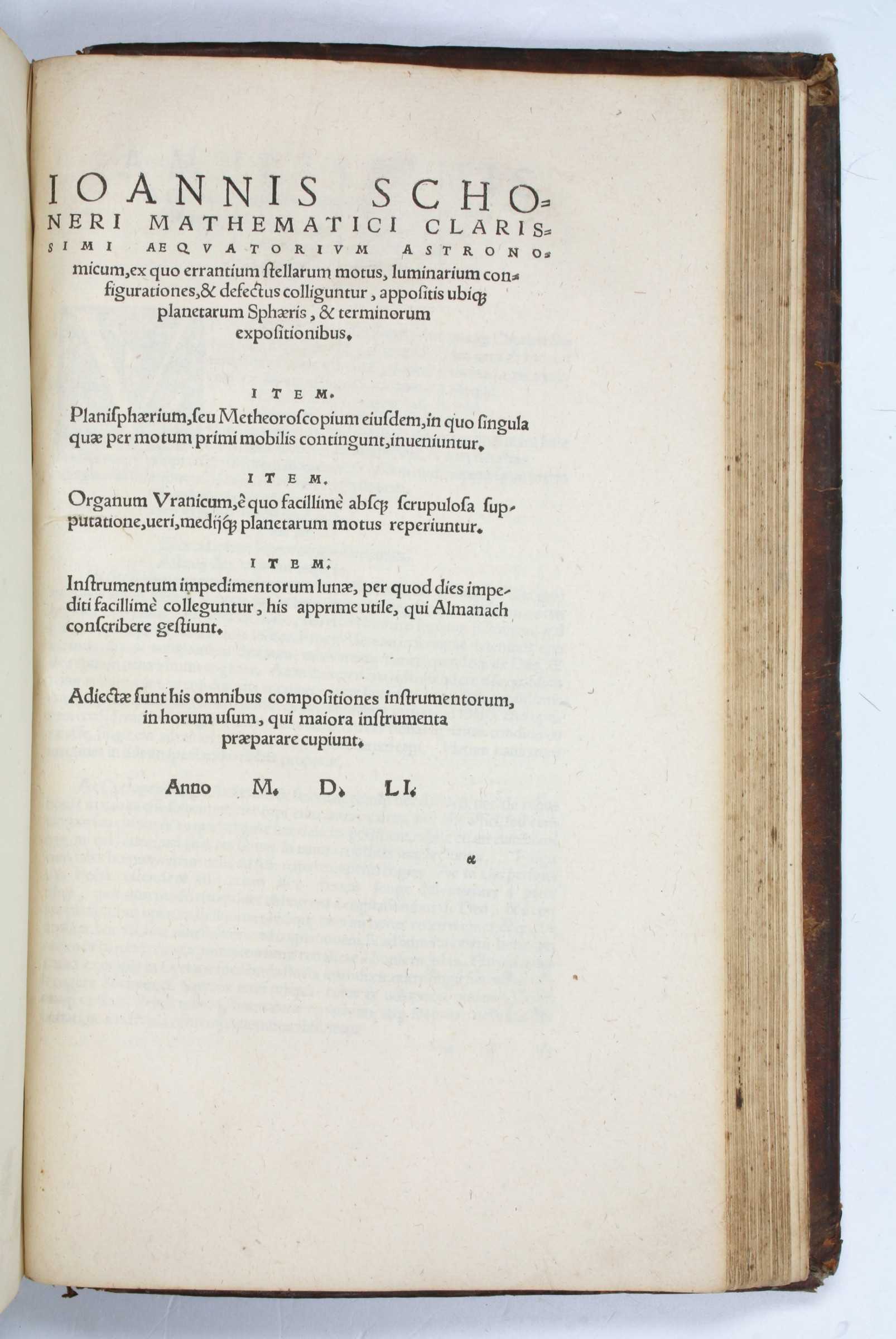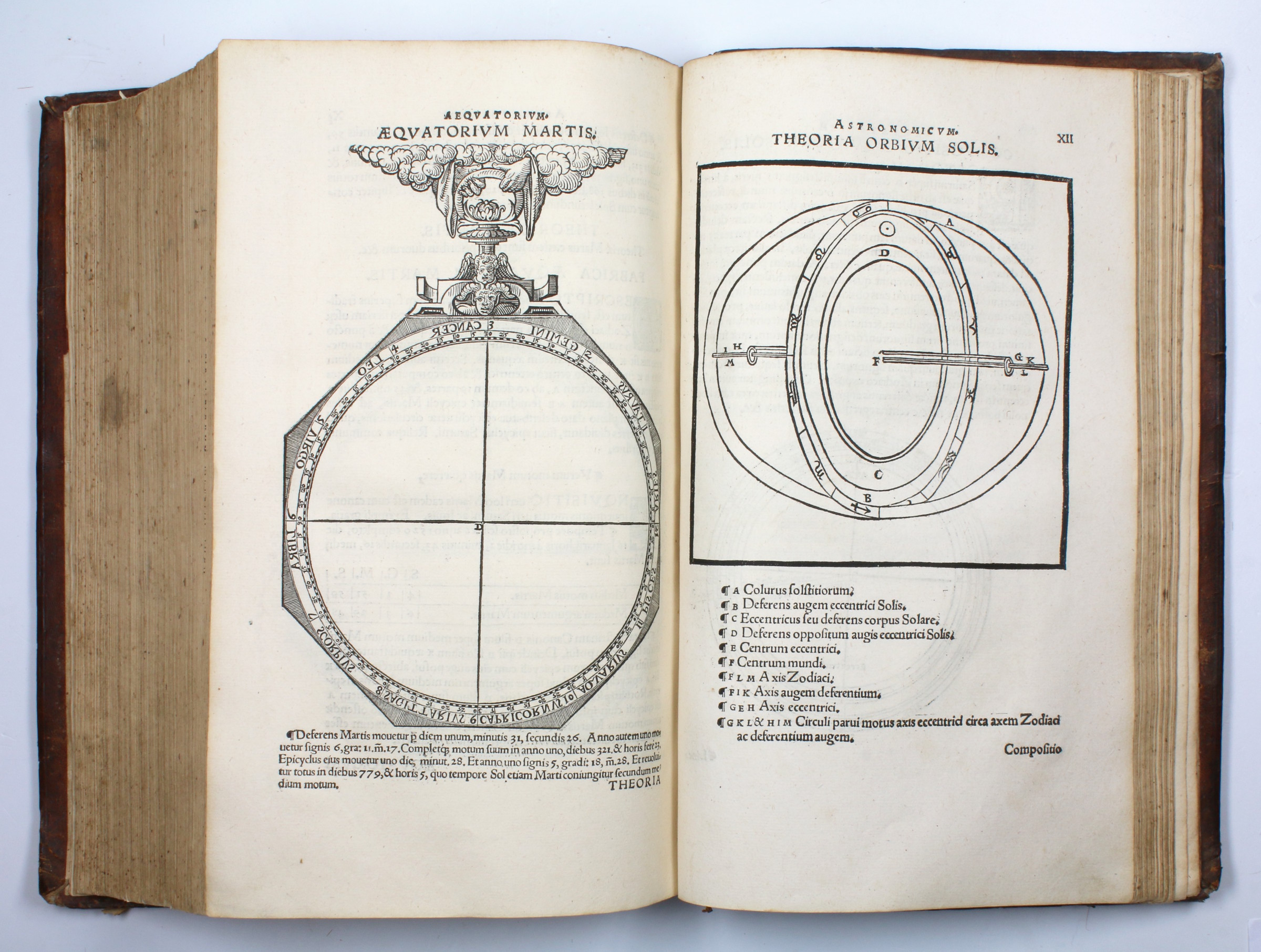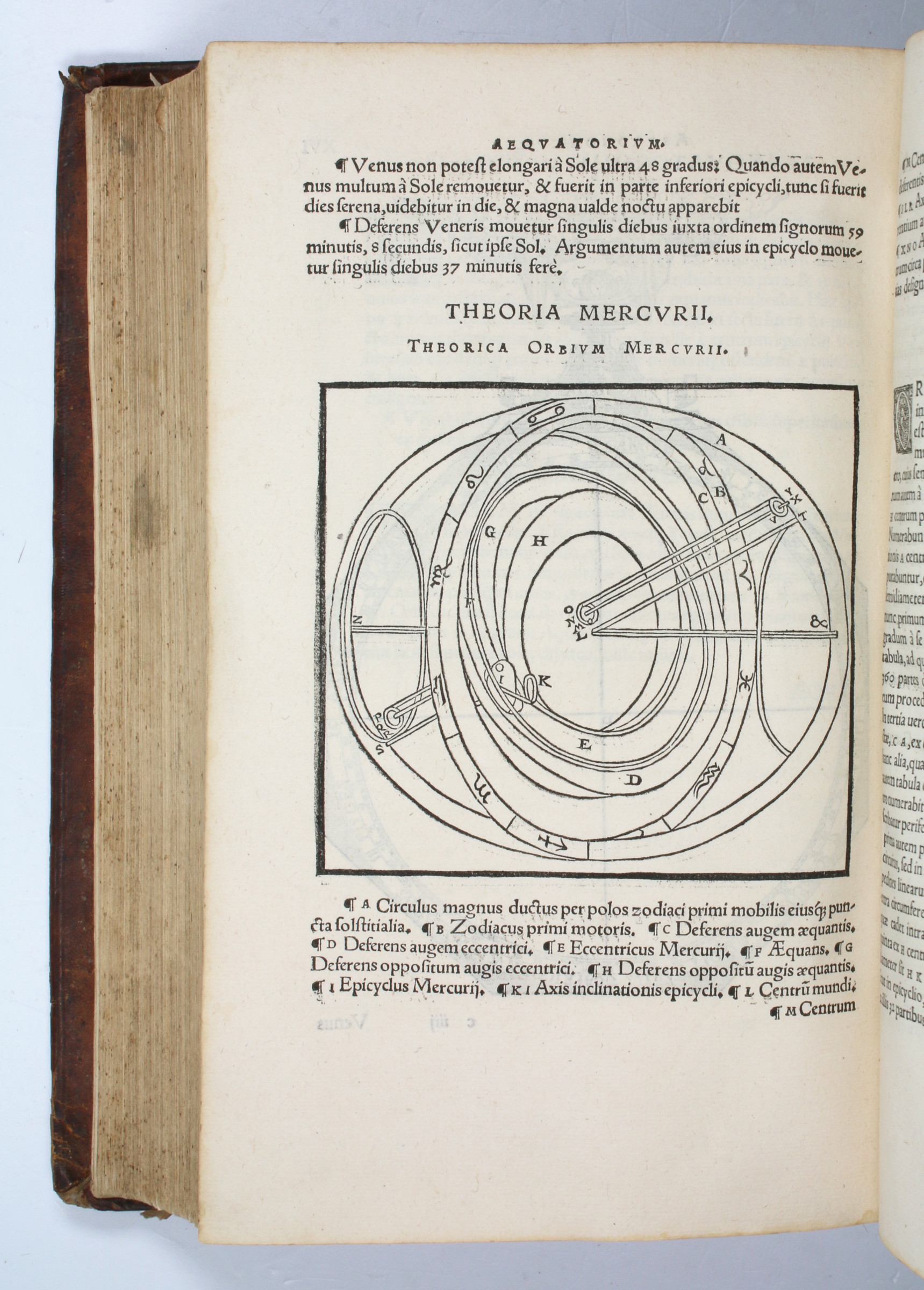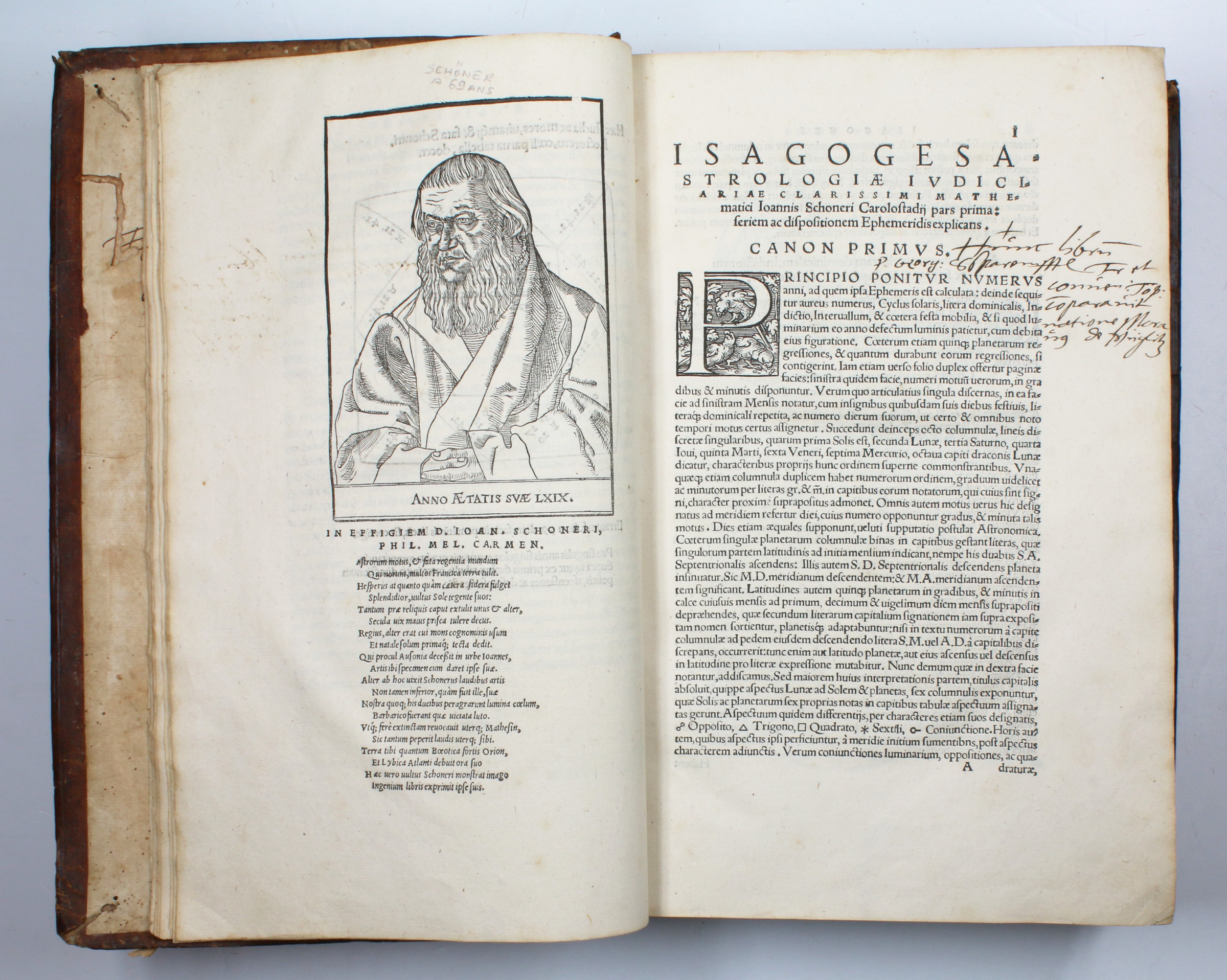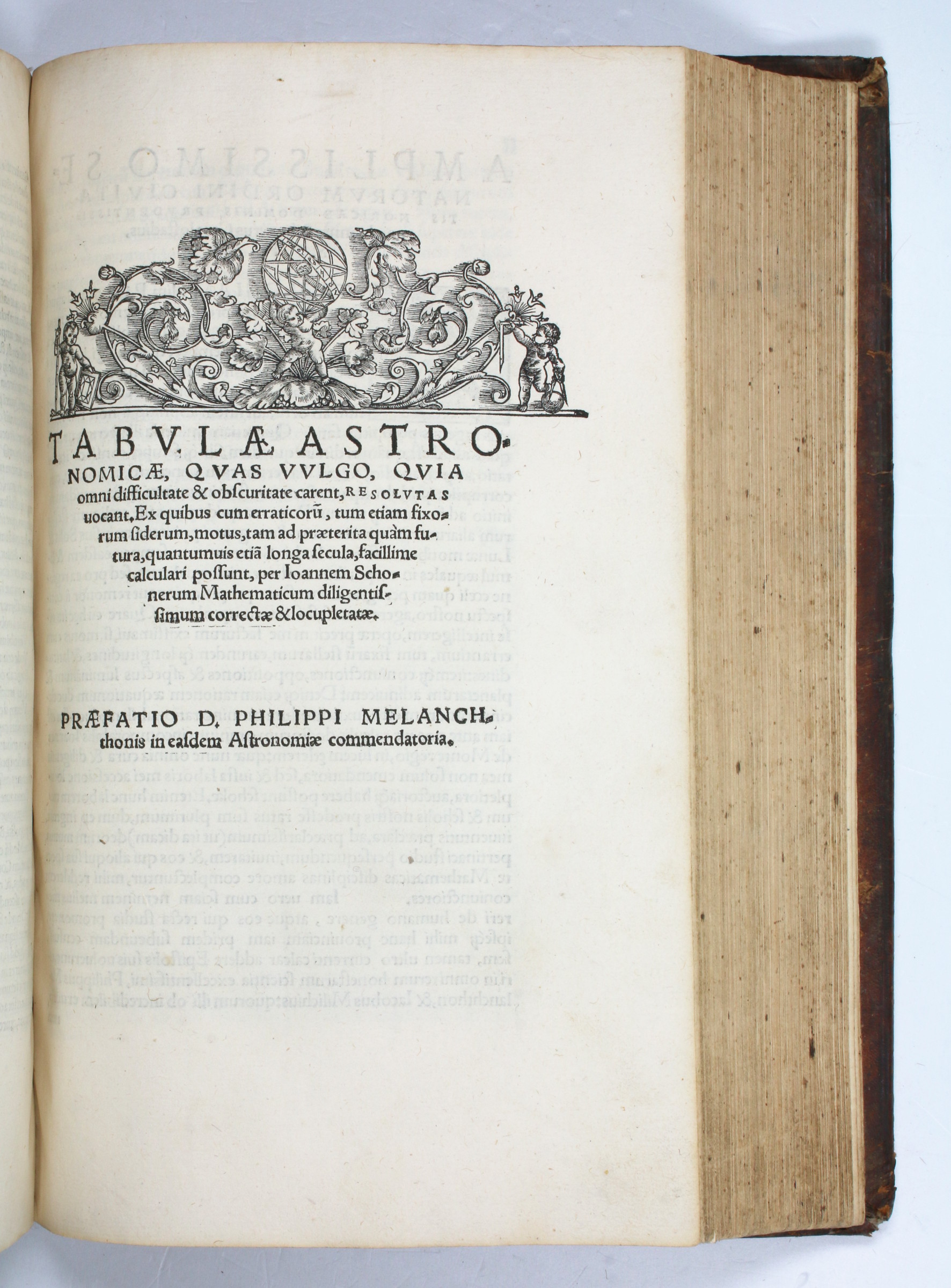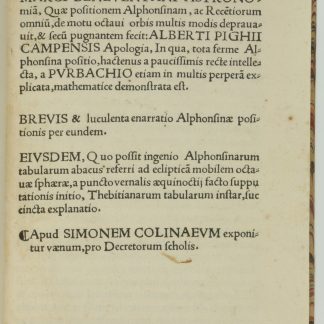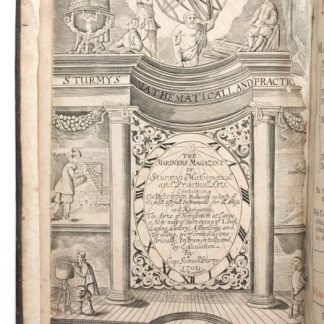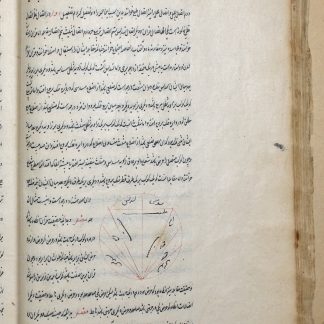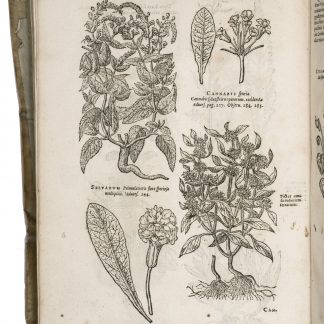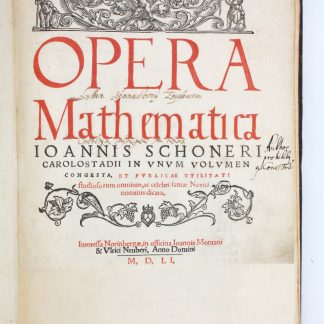The first collected works of Melanchthon's head mathematician, colleague of Copernicus and teacher of Rheticus: banned by Rome, studied by a Premonstratensian monk
Opera mathematica.
Folio. 3 parts in 1 vol. Title-page printed in red and black. With woodcut printer's device on last page; numerous woodcut diagrams and tables throughout. Contemporary full brown calf, covers stamped with oxydized gilt borders and supralibros; spine with handwritten title.
€ 35.000,00
A rare and important astronomical work, this copy closely studied and annotated at a Bohemian monastery in spite of the fact that the author had been banned by Rome.
This is the first edition of the collected works by Johann Schöner (1477-1547), mathematician, astronomer, cartographer, and scientific instrument maker from Karlstadt, in Bavaria. Schöner was a correspondent of Nicolaus Copernicus and in 1526 became the first professor of mathematics at the Nuremberg Aegidianum, the school run by Philipp Melanchthon. His most illustrious pupil was Georg Joachim Rheticus, who in the "Narratio prima" (1540, dedicated to Schöner) announced Copernicus's discoveries. Like Regiomontanus, Schöner set up a press in his own home and from there published works of mathematical and astronomical interest, as well as the first printed terrestrial globe to name the recently discovered continent of America.
The "Opera mathematica" was published posthumously by Schöner's son Andreas and contains a representative sample of Schöner's wide and diverse interests, and a digest of some of his separately published works, most of which are extremely rare. The whole volume is introduced by a preface by Melanchthon himself, who had already, in 1536, contributed the foreword to the "Tabulae astronomicae" (here forming part II): tables based on those computed initially by Regiomontanus, with a selection of other material originally written by Regiomontanus. The section entitled "Coelestis globi compositio" contains an important catalogue of stars taken from Copernicus's "De revolutionibus", but for which Schöner calculated the positions for the year 1550. Part III possibly contains the most important section, which describes and illustrates eleven instruments, under the title "Aequatorium Astronomicum", a revised and enlarged version of a work which first appeared in 1521. It contains the earliest collection of printed equatoria diagrams, as well further Copernican material adapted by Schöner, and probably inspired Peter Apian's "Astronomicum Caesareum".
Formerly in the Premonstratensian Teplá Abbey in Bohemia with the library's handwritten ownership, dated 1608, on the title-page, stricken out by a later hand with the note "Author prohibitus ex Conc. Trid."; also with traces of an erased later ownership, dated 1713. First numbered page has early acquisition note of "P. Georgius Staumpffl" (Stampfel), friar and conventual at Teplá and a native of Müglitz (Mohelnice) in Moravia, repeated as an ownership on front pastedown with additional references to various chapters of the book; several annotations, mostly by the same hand, throughout the volume. Latterly in a French private collection with a few pencil annotations in French by a 20th century hand.
Folio (230 x 337 mm). 3 parts in one volume. (10), CCXVIII [= 222]; CLXXII [= 169], (1 blank); (3), (1 blank), LIIII, (1) ff. (lacking only final blank). Title-page printed in red and black. With woodcut title decoration; woodcut printer's device on last page; numerous woodcut diagrams and tables throughout; woodcut portrait of the author on ß4v; 4 full-page woodcuts, including terrestrial globe, celestial globe and planisphere. Contemporary full brown calf, covers stamped with oxydized gilt borders and supralibros "Iusticia: suum / cuique tribuo" (upper cover) and "Occiditante virum / tali[s] Lucrecia vultu" (lower cover); spine whitewashed for uniform shelf appearance in a monastic library with handwritten title and note "Author prohibitus", old library shelfmark "A 19".
The text is illustrated by an elaborate series of charts which were intended to be assembled into volvelles, although in this copy (as is common almost without exception) the movable parts are missing. Blank lower quarter of title-page remargined. Binding somewhat rubbed; extremeties bumped and chipped; lacks ties.
VD 16, S 3465. BM-STC German 792. Adams S 678, 685. Houzeau/Lancaster 2388. Zinner 2033. Thorndike V, 354-371. Alden 551/35. DSB XII, 199f. Honeyman 2802A. BEA 1027f. Sabin 77805.

